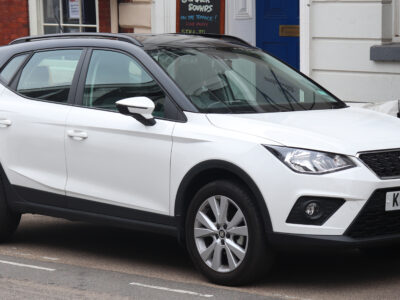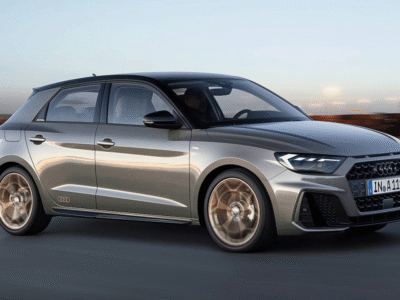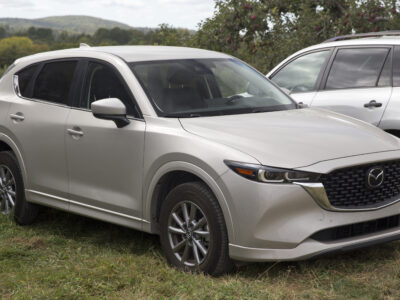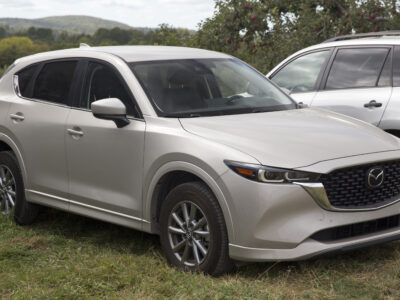
Hyundai i10 0 to 60: Complete Performance and Acceleration Guide (2008–2025)

When it comes to compact hatchbacks that combine efficiency, practicality, and surprising agility, the Hyundai i10 stands out. Despite its small footprint, this city car delivers consistent and respectable performance across its generations. In this detailed guide, we explore the Hyundai i10’s 0 to 60 mph times, quarter-mile stats, and performance characteristics from 2008 through 2025, covering every major engine, transmission, and model year.
- Overview of the Hyundai i10 Performance
- Hyundai i10 0 to 60 Times by Model Year
- Quarter-Mile Performance Comparison
- Engine and Transmission Configurations
- Hyundai i10 0–60 mph vs Competitors
- Driving Dynamics and Acceleration Factors
- Real-World Performance and Driver Feedback
- Hyundai i10 N Line Acceleration Data
- Fuel Efficiency vs Performance Trade-Off
- Transmission Impact on Acceleration
- Weight, Aerodynamics, and Traction
- Comparative Chart: Generations and Specs
- Hyundai i10 Performance Tips
- Conclusion
Overview of the Hyundai i10 Performance
The Hyundai i10 may not be built for the racetrack, but it consistently delivers balanced acceleration, quick urban maneuverability, and impressive efficiency. Over its lifespan, Hyundai refined its engines and transmissions to offer smoother power delivery while keeping emissions and fuel costs low.
The 0 to 60 mph time for the i10 has ranged from approximately 12.4 to 15 seconds, depending on the generation and engine variant. While those numbers may not scream “performance car,” they are competitive for the city hatchback segment where efficiency and affordability dominate priorities.
Hyundai i10 0 to 60 Times by Model Year
| Model Year | Engine | Transmission | 0–60 mph (sec) | Drive Type |
|---|---|---|---|---|
| 2008 Hyundai i10 | 1.1L 3-Cylinder | Manual | 15.0 | FWD |
| 2009 Hyundai i10 Style | 1.2L 3-Cylinder | 5-Speed Manual | 12.4 | FWD |
| 2011 Hyundai i10 Blue Drive | 1.0L 3-Cylinder | 5-Speed Manual | 14.3 | FWD |
| 2013 Hyundai i10 1.0 | 1.0L 3-Cylinder | 5-Speed Manual | 14.4 | FWD |
| 2020 Hyundai i10 1.0 | 1.0L 3-Cylinder | 5-Speed Manual | 14.1 | FWD |
| 2023 Hyundai i10 N Line | 1.0L Turbo 3-Cylinder | 5-Speed Manual | 10.5 | FWD |
Insight: The introduction of the N Line turbo variant marked a major leap in acceleration, cutting roughly 3–4 seconds off the traditional 0–60 mph time.
Quarter-Mile Performance Comparison
While quarter-mile data for the Hyundai i10 is limited, most variants cover the ¼ mile in around 18–19 seconds, depending on weight, engine size, and tire configuration.
| Model Year | Quarter-Mile Time (sec) | Estimated Trap Speed (mph) |
|---|---|---|
| 2008 Hyundai i10 | 19.5 | 70 |
| 2009 Hyundai i10 Style | 18.6 | 72 |
| 2011 Hyundai i10 Blue Drive | 19.3 | 70 |
| 2020 Hyundai i10 | 18.8 | 71 |
| 2023 Hyundai i10 N Line | 17.2 | 78 |
Engine and Transmission Configurations
Across its lifespan, the i10 has used a variety of 3- and 4-cylinder engines. The most common configurations include:
- 1.0L MPi 3-Cylinder (66 hp, 96 Nm) — the mainstay engine in later generations.
- 1.2L MPi 4-Cylinder (84 hp, 118 Nm) — offers slightly quicker acceleration.
- 1.0L T-GDi Turbo (99 hp, 172 Nm) — available in the N Line, delivering strong low-end torque.
Transmission options have evolved from 5-speed manuals to 5-speed automated manuals (AMT) and later CVTs in select markets.
Hyundai i10 0–60 mph vs Competitors
| Model | 0–60 mph (sec) | Power (hp) | Drive Type |
|---|---|---|---|
| Hyundai i10 1.0 | 14.1 | 66 | FWD |
| Kia Picanto 1.0 | 14.2 | 67 | FWD |
| Suzuki Celerio 1.0 | 14.5 | 67 | FWD |
| Toyota Aygo X 1.0 | 14.9 | 71 | FWD |
| Fiat 500 1.0 Hybrid | 13.8 | 70 | FWD |
The i10 remains one of the quickest in its segment, especially when paired with the 1.2L or 1.0L turbo engine.
You may be interested in reading Peugeot 208 Fuel Consumption: Complete Efficiency & MPG Guide
Peugeot 208 Fuel Consumption: Complete Efficiency & MPG GuideDriving Dynamics and Acceleration Factors
The i10’s acceleration is shaped by:
- Lightweight design (under 1,000 kg)
- Compact 3-cylinder engines
- Front-wheel drive layout
- Short gear ratios in manual variants
These characteristics allow brisk acceleration in city conditions, though highway overtakes require more effort, especially in the naturally aspirated versions.
Real-World Performance and Driver Feedback
Owners praise the responsive throttle, tight steering, and nimble handling. The i10 feels faster than its numbers suggest in urban driving due to its compact size and quick revving nature.
The 1.0L turbo engine in the N Line adds a sporty edge — delivering improved mid-range punch and smoother acceleration, making it the most dynamic i10 yet.
Hyundai i10 N Line Acceleration Data
The i10 N Line transforms the compact city car into a livelier performer. With its 1.0L turbocharged engine, the N Line:
- Hits 0–60 mph in 10.5 seconds
- Produces 99 hp and 172 Nm of torque
- Offers improved traction via re-tuned suspension
- Retains efficient fuel consumption (47–52 mpg combined)
Fuel Efficiency vs Performance Trade-Off
The Hyundai i10’s philosophy centers on efficiency. Even the quicker models maintain commendable economy:
- 1.0 MPi: 55–60 mpg (combined)
- 1.2 MPi: 50–55 mpg
- 1.0 T-GDi: 47–52 mpg
This balance makes the i10 an ideal daily driver for urban and suburban commuters who prioritize cost-effectiveness over pure speed.
Transmission Impact on Acceleration
The manual versions consistently outperform their AMT and CVT counterparts in acceleration due to reduced drivetrain losses. Enthusiasts prefer the 5-speed manual for its direct feel and quicker response.
You may be interested in reading Peugeot 208 Fuel Consumption: Complete Efficiency & MPG Guide
Peugeot 208 Fuel Consumption: Complete Efficiency & MPG Guide Peugeot e-208 Electric Range: The Benchmark for Efficiency and Innovation in 2025
Peugeot e-208 Electric Range: The Benchmark for Efficiency and Innovation in 2025Weight, Aerodynamics, and Traction
At just around 950–1,015 kg, the i10 benefits from its light weight. Hyundai’s aerodynamic tweaks in the 2020 redesign improved drag efficiency, slightly enhancing both acceleration and highway fuel economy.
Comparative Chart: Generations and Specs
| Generation | Years | Engines | 0–60 mph (sec) | Top Speed (mph) | Power (hp) |
|---|---|---|---|---|---|
| 1st Gen (PA) | 2008–2013 | 1.1L, 1.2L | 12.4–15.0 | 93 | 65–85 |
| 2nd Gen (BA) | 2014–2019 | 1.0L, 1.2L | 13.8–14.4 | 100 | 66–87 |
| 3rd Gen (AC3) | 2020–2025 | 1.0L, 1.2L, 1.0T | 10.5–14.1 | 112 | 66–99 |
Hyundai i10 Performance Tips
For drivers seeking slightly sharper response:
- Keep tires properly inflated to maintain traction.
- Use high-quality fuel for consistent ignition timing.
- Regularly service the air filter and spark plugs.
- Opt for manual transmission where available.
- For best results, consider the N Line turbo variant.
Conclusion
The Hyundai i10’s 0–60 performance showcases how far compact hatchbacks have come. From humble beginnings with 15-second acceleration to the energetic 10.5-second N Line, the i10 blends city-friendly practicality with refined engineering. Hyundai’s continuous evolution ensures that this small hatchback remains competitive, efficient, and unexpectedly fun to drive — proving that even the smallest cars can deliver big performance.
FAQs
1. What is the fastest Hyundai i10 model?
The 2023 Hyundai i10 N Line is the quickest, reaching 0–60 mph in 10.5 seconds.
2. Is the Hyundai i10 good for highway driving?
Yes. While not a sports car, it comfortably maintains motorway speeds and offers good stability.
3. Does engine size affect the i10’s acceleration?
Absolutely — the 1.2L and 1.0L turbo engines are notably quicker than the base 1.0L MPi.
4. How does the i10 compare to the Kia Picanto?
Performance is nearly identical, but the i10 offers a slightly smoother ride and quieter cabin.
5. Is there an automatic Hyundai i10 with good acceleration?
The AMT and CVT options are slower than manual versions, but provide smoother operation for city driving.
 Peugeot 208 Fuel Consumption: Complete Efficiency & MPG Guide
Peugeot 208 Fuel Consumption: Complete Efficiency & MPG Guide Peugeot e-208 Electric Range: The Benchmark for Efficiency and Innovation in 2025
Peugeot e-208 Electric Range: The Benchmark for Efficiency and Innovation in 2025 Mazda CX-5 Real-World MPG and Fuel Economy Data (2025 Edition)
Mazda CX-5 Real-World MPG and Fuel Economy Data (2025 Edition)If you want to know other articles similar to Hyundai i10 0 to 60: Complete Performance and Acceleration Guide (2008–2025) you can visit the category Driving.
Deja una respuesta





More content of your interest